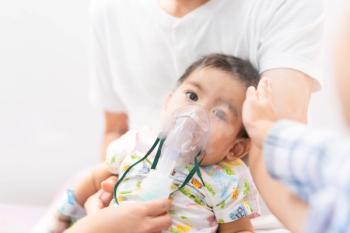
Certain groups may be at greater risk of MIS-C
Multisystem inflammatory syndrome in children (MIS-C) is a serious consequence of COVID-19. Is the risk of it equal to all children or does race/ethnicity play a role?
Although it was initially thought that COVID-19 led to only mild cases in children, the discovery of multisystem inflammatory syndrome in children (MIS-C) in April 2020 proved that COVID-19 can, in certain pediatric populations, be quite serious. A
The data for the study came through routine public health surveillance in New York City. The city’s Department of Health and Mental Hygiene mandated the reporting of patients aged younger than 21 years who were hospitalized in New York City with symptoms that suggested MIS-C. Epidemiologists tied patient record to severe acute respiratory syndrome coronavirus 2 (SARS-CoV-2) molecular and serologic laboratory data. Participants in the study’ population-based cohort included New York City residents who met the definition of MIS-C set by the Centers for Disease Control and Prevention and were admitted to the hospital from March 1 to June 30, 2020.
A total of 223 met the MIS-C criteria with a median age of 7 years; 127 of the patients were male. Fifty of the patients had 1 or more underlying conditions with asthma (31 patients [13.9%]), obesity (20 patients [9.0%]) being the most common underlying condition. Antibodies or RNA for SARS-CoV-2 were discovered in 175 patients in the cohort. The SARS-CoV-2 test results were negative or unavailable for 48 patients, but included on the basis of epidemiological criteria. Information on race or ethnicity was available for 184 patients. Overall MIS-C incidence was 11.4 cases per 100,000 population aged younger than 20 years. Black children made up 22.2% of the population in New York City and accounted for 19.9% of hospitalizations due to COVID-19 in patients aged younger that 20 years, but 34.4% of the patients who had MIS-C were Black. Patients who were hispanic had a similar proportion between the city population and incidence of MIS-C. When compared to white children, a higher incidence of MIS-C was noted in Black (incidence rate ratio [IRR], 3.2; 95% CI, 2.0-4.9) and hispanic (IRR, 1.7; 95% CI, 1.1-2.7) children.
The researchers concluded that Black and hispanic children were more likely to suffer from MIS-C than children of other races/ethnicities, in addition to the already higher likelihood of being hospitalized because of COVID-19. Although larger studies will be needed to look at the potential link between MIS-C and race/ethnicity, they recommended that clinicians be alert to the potential increased risk for the condition among certain groups.
Reference
1. Lee E, Kepler K, Geevarughese A, et al. Race/ethnicity among children with COVID-19–associated multisystem inflammatory syndrome. JAMA Netw Open. 2020;3(11):e2030280. doi:10.1001/jamanetworkopen.2020.30280
Newsletter
Access practical, evidence-based guidance to support better care for our youngest patients. Join our email list for the latest clinical updates.










